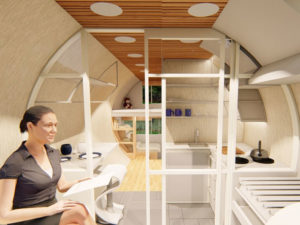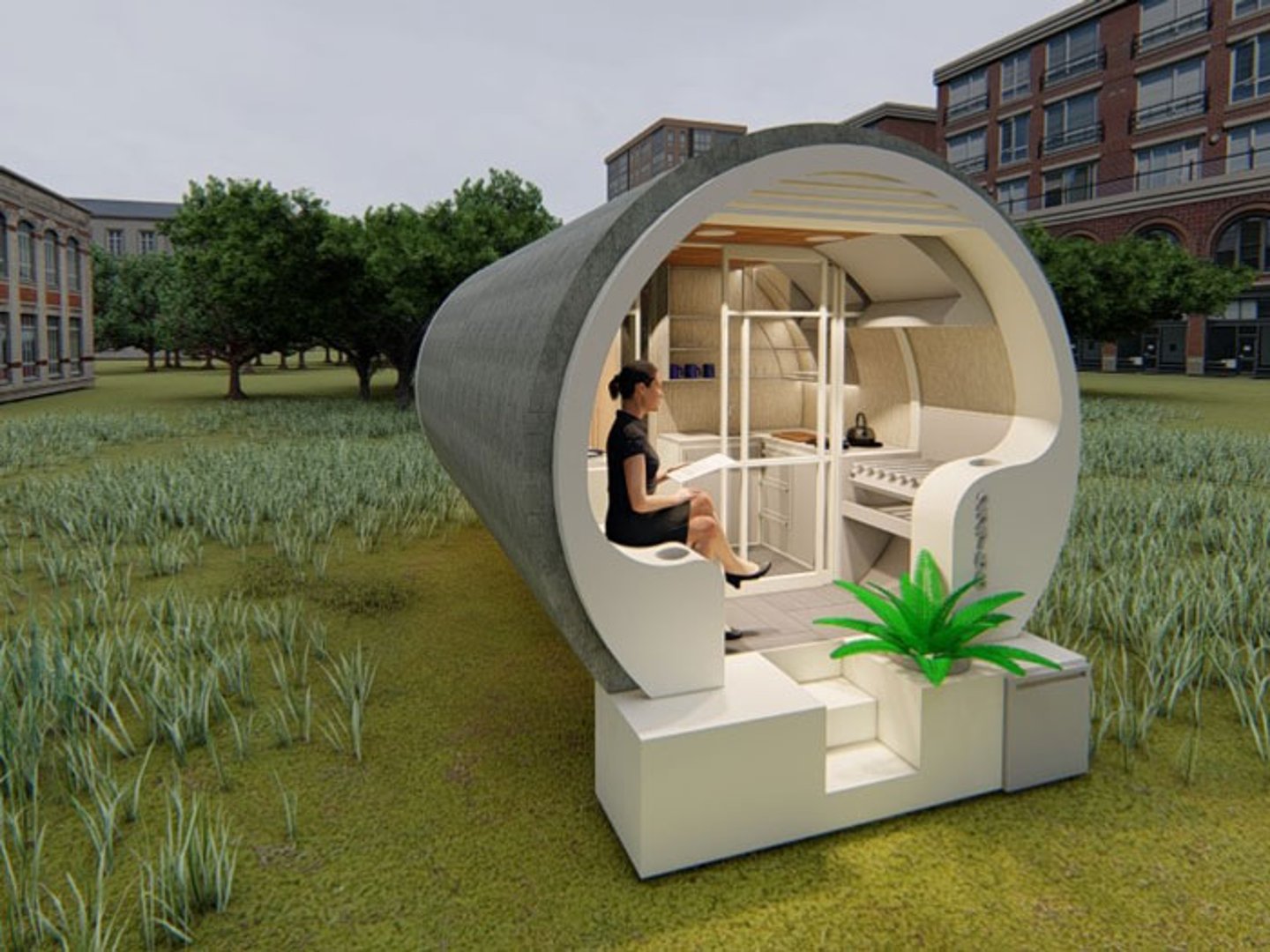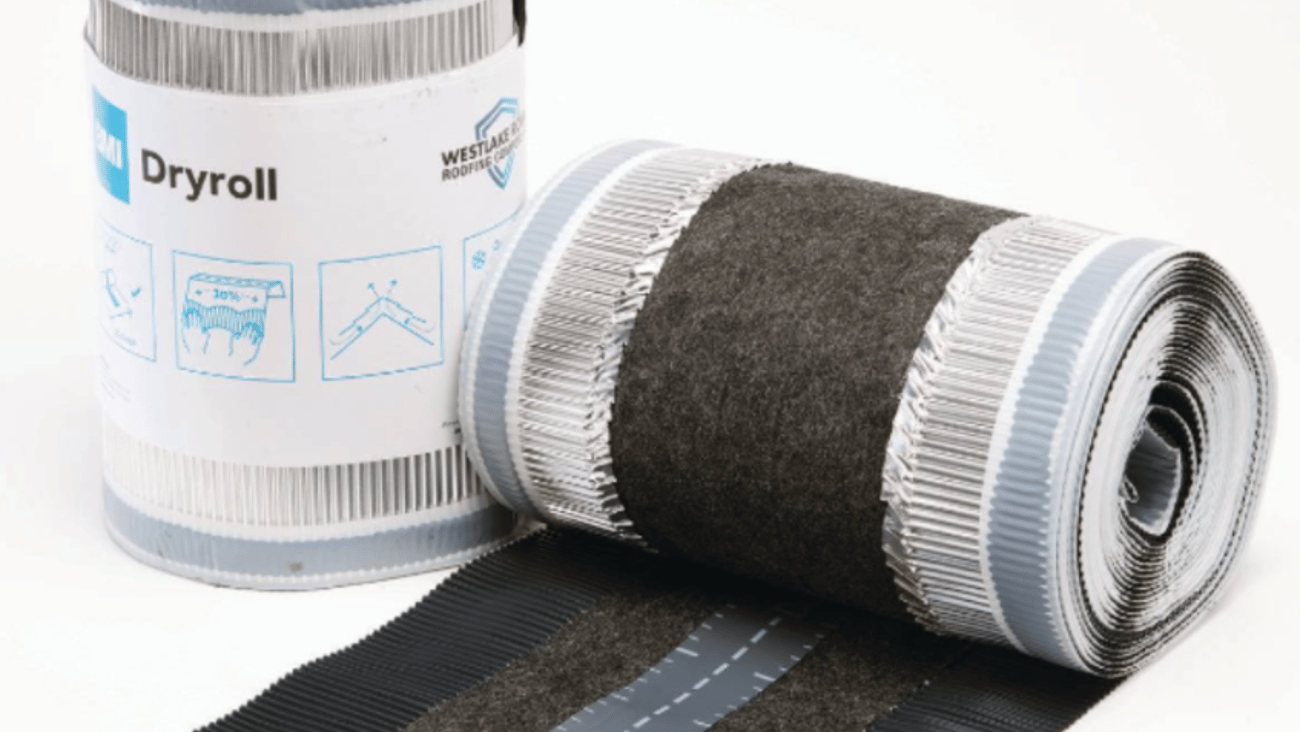Pipe Dreams to a housing reality
Affordable housing solution becomes reality through Rinker Materials and AIAS.
In effort to find a solution to homelessness and overpopulation, Quikrete subsidiary Rinker Materials and the American Institute of Architecture Students (AIAS) joined forces to make affordable, high-quality housing a reality through the vision of architectural student Sandra Guillen.
A native of La Paz, Bolivia and the single mother of a 12-year-old son, Guillen tapped personal experiences to win the Rinker Materials/AIAS Pipe Dream tiny home design contest. The home was displayed last month at the International Builder’s Show in Las Vegas.
Challenged to transform concrete pipe traditionally used for underground storm water management from Rinker Materials into a tiny home, Guillen bested other AIAS members by focusing on function and comfort.
She also leaned on her dream of becoming an architect to reconstruct the 8-foot diameter, 16-foot long concrete pipe into a mobile, stackable, durable, sustainable and relatively inexpensive alternative to traditional housing. The next generation of tiny homes, concrete pipe is a real-world solution for homelessness and overpopulation as well as those displaced by natural disaster or simply unable to afford a home.
According to the Department of Housing and Urban Development, about 554,000 people are homeless on any given night while the U.S. Census says the population is growing at a rate of 2 million people per year or 240 per hour.
 The Pipe Dream home at the Builders' Show.
The Pipe Dream home at the Builders' Show.
“As a child, my parents emphasized the importance of an education. In fact, my mother would playfully threaten to send me to live in a pipe under the bridge if I didn’t do well in school,” said Guillen. “While I understood their point, it was also a harsh reminder of the homeless problem around the world. When I heard about the Pipe Dream contest, I knew it was my opportunity to make a difference. Concrete pipe makes the perfect structure for a tiny home and hopefully my design will help many people live more comfortably. At the very least, this experience culminates my journey to earn a degree and sets a great example for my son.”
Extending the natural cool gray of the concrete pipe, Guillen integrated light blues and off whites into the home design. She chose these neutral colors to give the home a soft and welcome feel, while making the nearly 100 square-foot domicile seem much larger.
The effect of enlarging the tiny home was also accomplished by incorporating tile surfaces, large French glass front doors and two retractable glass windows in the rear. A covered porch and large paver patio with grill significantly increase the living space outside of the tiny home as well.
To streamline the process, Rinker Materials turned to fellow Quikrete companies Custom Building Products and Keystone Hardscapes for the tile and paver installation.
The wooden-frame, four-section modular tiny home design – kitchen, a bathroom, living area and combination bedroom/office – can be assembled in a Rinker Materials concrete pipe in less than a day (excluding electricity and plumbing).
 The 30-ton fire-resistant concrete pipe can be easily transported on a flatbed truck and requires 8 commercial-grade rubber wheel chocks to stabilize the tiny home. While amenities will dictate the final cost of a tiny home built from concrete pipe, the prototype revealed at IBS cost about $35,000. The core cost for the concrete pipe is about $14,000, so the overall tiny home could be more or less expensive depending on how it’s customized, Rinker Materials said.
The 30-ton fire-resistant concrete pipe can be easily transported on a flatbed truck and requires 8 commercial-grade rubber wheel chocks to stabilize the tiny home. While amenities will dictate the final cost of a tiny home built from concrete pipe, the prototype revealed at IBS cost about $35,000. The core cost for the concrete pipe is about $14,000, so the overall tiny home could be more or less expensive depending on how it’s customized, Rinker Materials said.
“Exploring our concrete pipe as a tool to fight homelessness and overpopulation alongside the AIAS has already proven to be a viable prospect,” said Tom Hartley, vice president of sales and marketing for Rinker Materials. “Sandra’s unique perspective resulted in a smart, repeatable design that could truly make tiny concrete pipe homes accessible to anyone. Combine that with our national distribution and there isn’t a community we couldn’t potentially help.”
Rinker Materials, is one of the nation’s largest and leading manufacturers of concrete pipe and related products for the collection, treatment, safe storage and controlled release of stormwater.
Hartley noted that, that a long-term goal for Rinker is to partner with HUD, FEMA and similar organizations to make tiny concrete pipe homes a reality for those in need.
“This competition and our partnership with Rinker Materials are valuable indicators of the kind of forward-looking and actionable progress that can be achieved when we open our minds to the voices of a new generation, and collaborate with them as equal partners in the crafting of more equitable and resilient built environment for all,” said Charlie Klecha, interim executive director of the AIAS.
A native of La Paz, Bolivia and the single mother of a 12-year-old son, Guillen tapped personal experiences to win the Rinker Materials/AIAS Pipe Dream tiny home design contest. The home was displayed last month at the International Builder’s Show in Las Vegas.
Challenged to transform concrete pipe traditionally used for underground storm water management from Rinker Materials into a tiny home, Guillen bested other AIAS members by focusing on function and comfort.
She also leaned on her dream of becoming an architect to reconstruct the 8-foot diameter, 16-foot long concrete pipe into a mobile, stackable, durable, sustainable and relatively inexpensive alternative to traditional housing. The next generation of tiny homes, concrete pipe is a real-world solution for homelessness and overpopulation as well as those displaced by natural disaster or simply unable to afford a home.
According to the Department of Housing and Urban Development, about 554,000 people are homeless on any given night while the U.S. Census says the population is growing at a rate of 2 million people per year or 240 per hour.
 The Pipe Dream home at the Builders' Show.
The Pipe Dream home at the Builders' Show.“As a child, my parents emphasized the importance of an education. In fact, my mother would playfully threaten to send me to live in a pipe under the bridge if I didn’t do well in school,” said Guillen. “While I understood their point, it was also a harsh reminder of the homeless problem around the world. When I heard about the Pipe Dream contest, I knew it was my opportunity to make a difference. Concrete pipe makes the perfect structure for a tiny home and hopefully my design will help many people live more comfortably. At the very least, this experience culminates my journey to earn a degree and sets a great example for my son.”
Extending the natural cool gray of the concrete pipe, Guillen integrated light blues and off whites into the home design. She chose these neutral colors to give the home a soft and welcome feel, while making the nearly 100 square-foot domicile seem much larger.
The effect of enlarging the tiny home was also accomplished by incorporating tile surfaces, large French glass front doors and two retractable glass windows in the rear. A covered porch and large paver patio with grill significantly increase the living space outside of the tiny home as well.
To streamline the process, Rinker Materials turned to fellow Quikrete companies Custom Building Products and Keystone Hardscapes for the tile and paver installation.
The wooden-frame, four-section modular tiny home design – kitchen, a bathroom, living area and combination bedroom/office – can be assembled in a Rinker Materials concrete pipe in less than a day (excluding electricity and plumbing).
 The 30-ton fire-resistant concrete pipe can be easily transported on a flatbed truck and requires 8 commercial-grade rubber wheel chocks to stabilize the tiny home. While amenities will dictate the final cost of a tiny home built from concrete pipe, the prototype revealed at IBS cost about $35,000. The core cost for the concrete pipe is about $14,000, so the overall tiny home could be more or less expensive depending on how it’s customized, Rinker Materials said.
The 30-ton fire-resistant concrete pipe can be easily transported on a flatbed truck and requires 8 commercial-grade rubber wheel chocks to stabilize the tiny home. While amenities will dictate the final cost of a tiny home built from concrete pipe, the prototype revealed at IBS cost about $35,000. The core cost for the concrete pipe is about $14,000, so the overall tiny home could be more or less expensive depending on how it’s customized, Rinker Materials said.“Exploring our concrete pipe as a tool to fight homelessness and overpopulation alongside the AIAS has already proven to be a viable prospect,” said Tom Hartley, vice president of sales and marketing for Rinker Materials. “Sandra’s unique perspective resulted in a smart, repeatable design that could truly make tiny concrete pipe homes accessible to anyone. Combine that with our national distribution and there isn’t a community we couldn’t potentially help.”
Rinker Materials, is one of the nation’s largest and leading manufacturers of concrete pipe and related products for the collection, treatment, safe storage and controlled release of stormwater.
Hartley noted that, that a long-term goal for Rinker is to partner with HUD, FEMA and similar organizations to make tiny concrete pipe homes a reality for those in need.
“This competition and our partnership with Rinker Materials are valuable indicators of the kind of forward-looking and actionable progress that can be achieved when we open our minds to the voices of a new generation, and collaborate with them as equal partners in the crafting of more equitable and resilient built environment for all,” said Charlie Klecha, interim executive director of the AIAS.




